Should you Stop Running? 5 Common Injuries and how to fix them.
Wednesday, February 11, 2015

If you enjoy running but are continuously frustrated with aches and pains you're not alone! According to Sports Medicine Australia 70% of recreational and competitive runners sustain injuries, often by doing too much too soon. So, how do you know when to seek professional help?
Here are some of the most common running injuries and how to fix them....
Runner's Knee
Responsible for 40% of all running injuries, runner's knee occurs when the cartilage on the underside of the kneecap (patella) becomes irritated. It commonly flares up during or after a long run, descending hills and stairs or after extended periods of sitting.
Fix: Dynamic rest, such as upper body work and pool running. Gain an understanding of the cause and correct it, whether it's shoes that support your foot type and/or working on body mechanics and proper running form.
Prevention: Strengthen your knee's support muscles by performing exercises such as squats, lateral side steps and stretching the hip flexors.
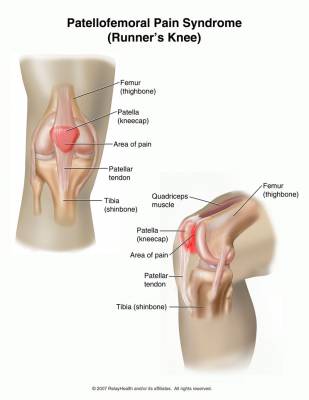
Plantar Fasciitis
One of the major foot complaints among runners is plantar fasciitis. The plantar fascia supports the arch of your foot and is the ligament that connects your heel bone to your toes. Repeated strain of the ligament can cause tiny tears resulting in pain and swelling.
Fix: Most people with plantar fasciitis experience pain under the heel or in the foot arch when they take their first steps after sitting for a long time or after they get out of bed. Wear shoes with extra cushion, gently massage and stretch the area before standing up.
Prevention: A professional assessment of your foot and leg biomechanics is beneficial to understand the key cause and prevent future inflammation. When running, a shorter stride length and heel first strike position will reduce the stress on your plantar fascia.
Book your physio session with us today and receive a complementary GAITSCAN biomechanical assessment to really find out what's happening as you walk.
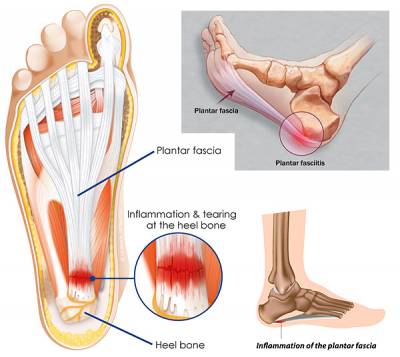
Achilles Tendonitis
Runners with tight, weak calves are especially susceptible to Achilles tendonitis. The Achilles tendon connects the two major calf muscles to the heel bone. Under too much stress, the tendon tightens and becomes irritated. If an inflammation is not resolved it can progress to a degeneration of the tendon which leads to microscopic tears.
Fix: Avoid weight baring activities and treat with RICE (Rest, Ice, Compression, Elevation). The aim is to remould your scar tissue to prevent future tears, do this by massage and muscle stretches. Once the initial discomfort and healing has occurred an eccentric calf strengthening program prescribed by a physiotherapist will help to restore muscle strength.
Prevention: Avoid wearing high heels and unsupported shoes like flip flops. Take time to stretch before and after running. Some runners wear compression socks for extra support.
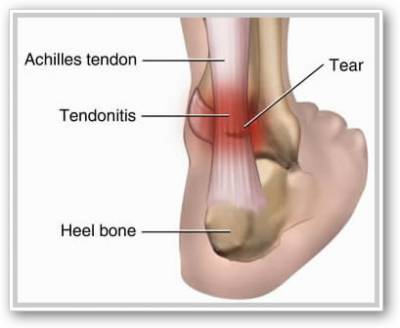
Iliotibial Band Syndrome (ITB Syndrome)
ITB Syndrome is an overuse injury caused by repeated trauma rather than a specific incident. It is caused by an inflammation of tissues around the bump of bone (lateral epicondyle) on the side of the knee. If you are experiencing ITB Syndrome, running is usually impossible due to the extreme pain on the upper outside of your knee, but you may find walking completely pain free.
Fix: Because ITB Syndrome is caused by muscular imbalances an assessment by a physiotherapist should be your first point of call. With a thorough diagnosis and treatment plan many runners will feel better within a few weeks.
Prevention: Mix up your running track and direction, increase running distance slowly and invest in quality shoes. Often a corrective strengthening program is necessary, as muscle imbalances aggravate the problem. Soft tissue work is also recommended. Get friendly with your foam roller!
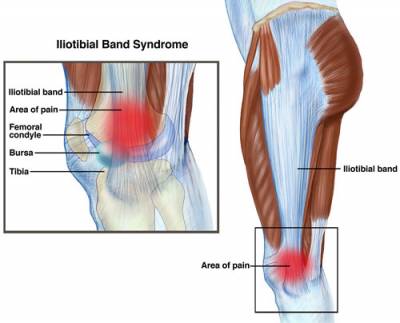
Shin splints
Shin splits refer to the pain felt anywhere along the shinbone from the knee to ankle. The most common area is in medial area (the inside of the shin). Characterised by aches and pains, tenderness and the overlying skin may be red and inflamed. Pain can be felt before, during and after running.
Fix: Rest, regular use of ice packs and anti-inflammatory medication. Receiving a proper diagnosis from a physiotherapist can prevent shin splints from becoming a stress fracture in the future.
Prevention: Increase your speed and distance gradually and introduce cross training to your week with exercises that are less jarring on your joints like swimming and cycling. Stretch your calves and Achilles regularly. Muscle releases and dry needling can also be extremely beneficial (ensure you see a physiotherapist qualified in dry needling techniques).
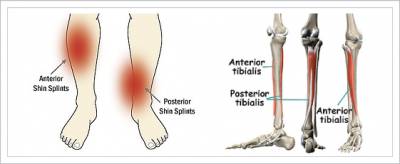
*This information does not replace professional diagnosis and treatment from a physiotherapist. If you experience any of these symptoms it is recommended you make an appointment with a physiotherapist.
